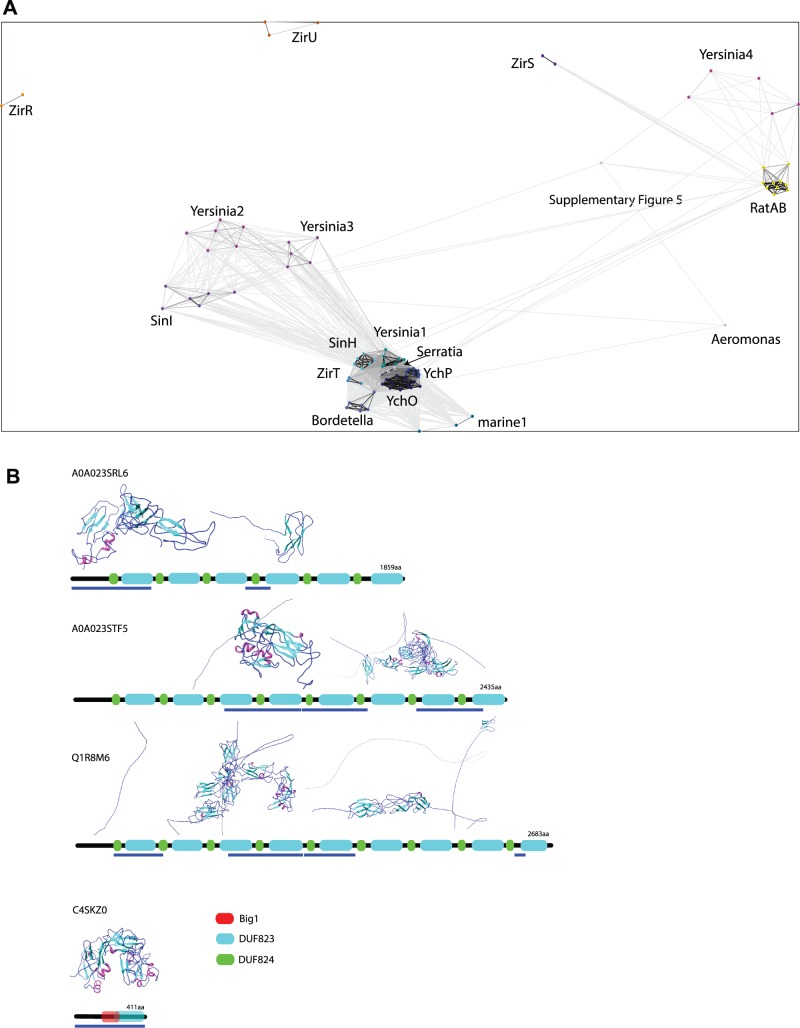Fig. 9.—
Relationships between Rat-like proteins and Big domain proteins. (A) Protein–protein similarity network of putative two-partner secretion systems with inverse autotransporters and closely related sequences, including the membrane-embedded proteins as well as their putative substrates as shown in fig. 8A, using CLANS. The coloring corresponds to that used in fig. 8A. (B) Domain architecture of selected Rat-like proteins as annotated in the InterPro database (Mitchell et al. 2015, retrieved 2015 Aug 12). All proteins were subjected to Phyre2 (Kelley et al. 2015) in the intensive mode, and the parts of the retrieved structures that were not disordered are shown; the colors show secondary structure elements, and the images were prepared in Chimera (Pettersen et al. 2004). The blue bars below the domain profiles indicate the regions of the protein that were not disordered but are represented by structural elements.

